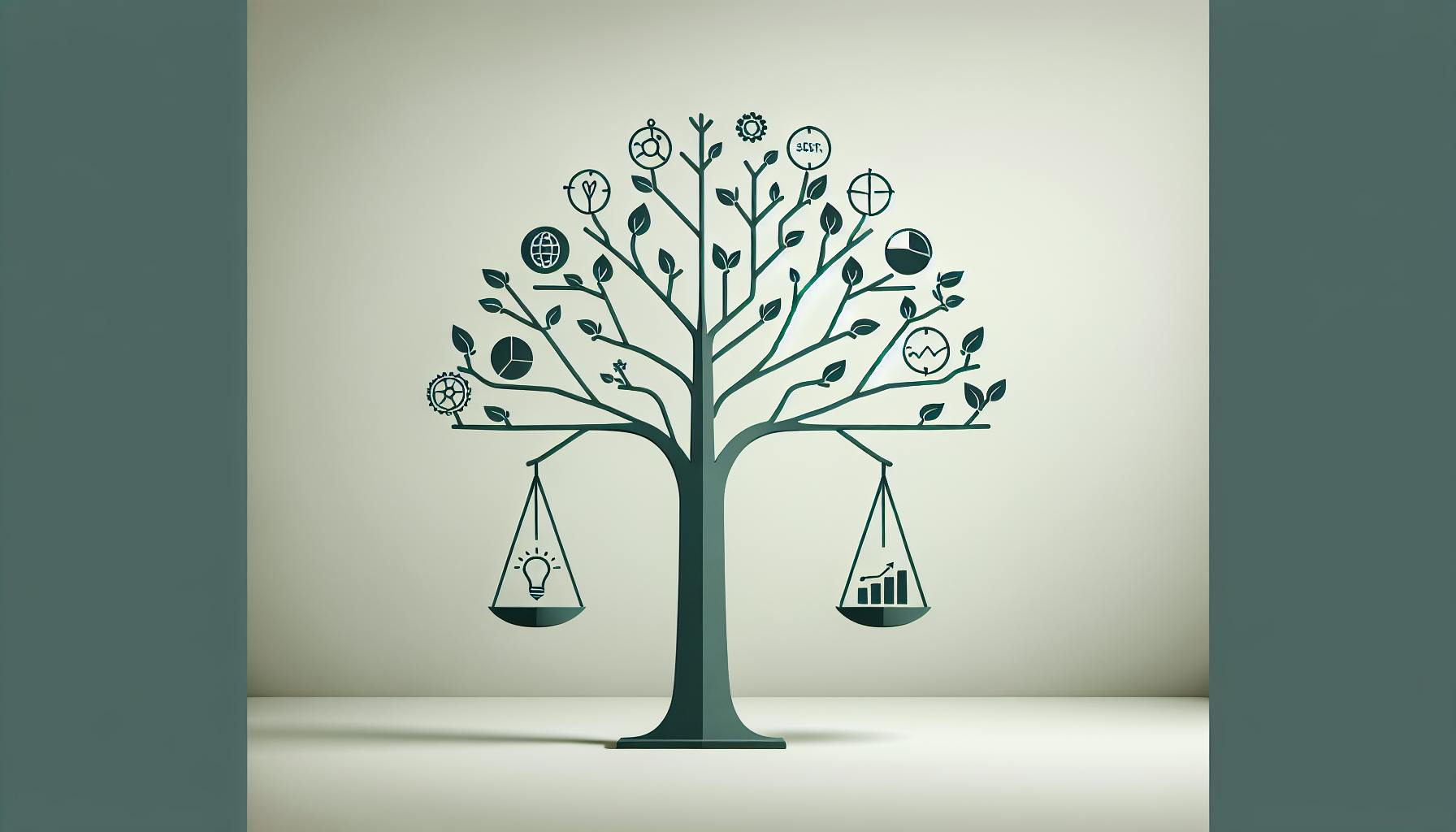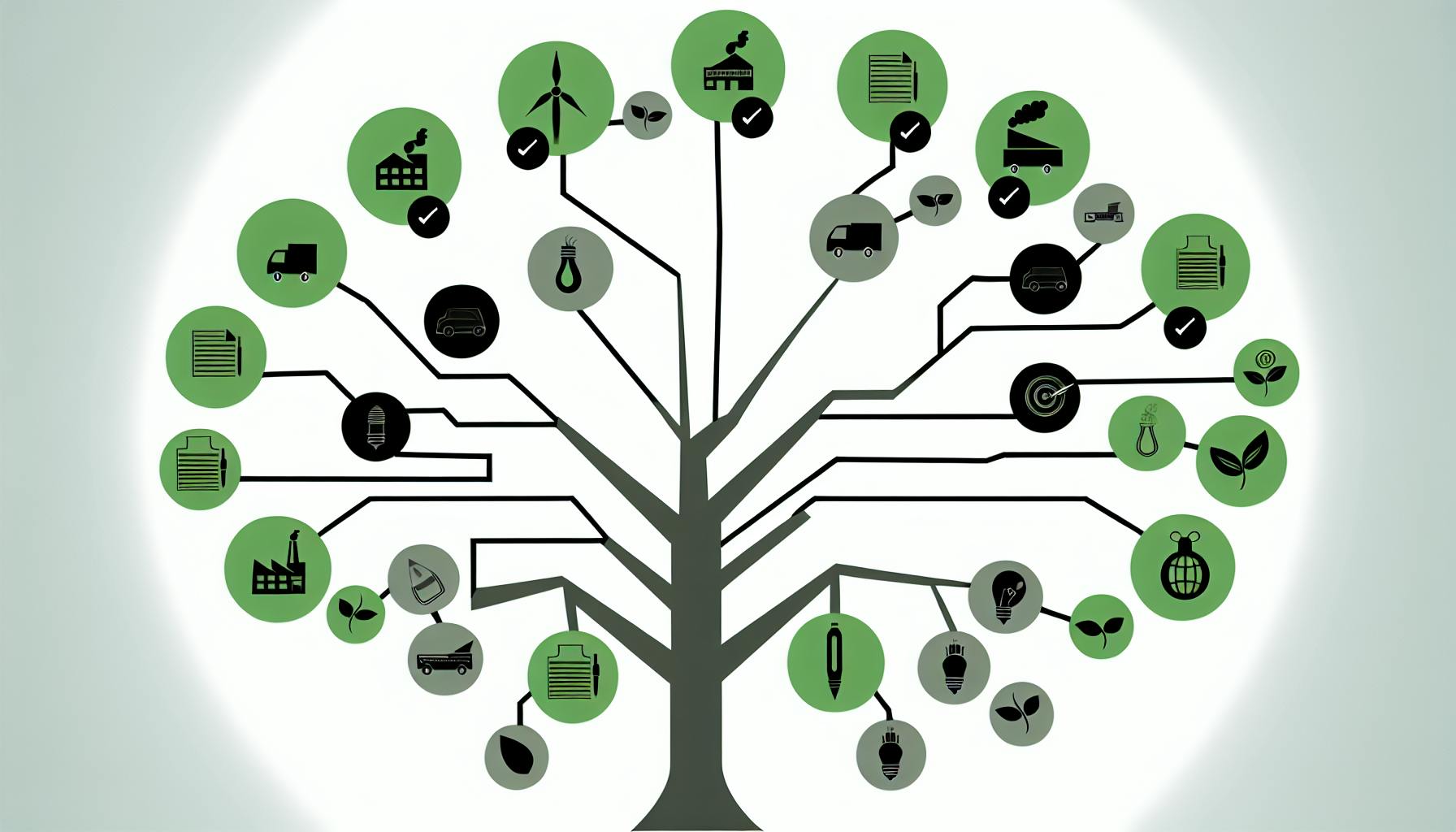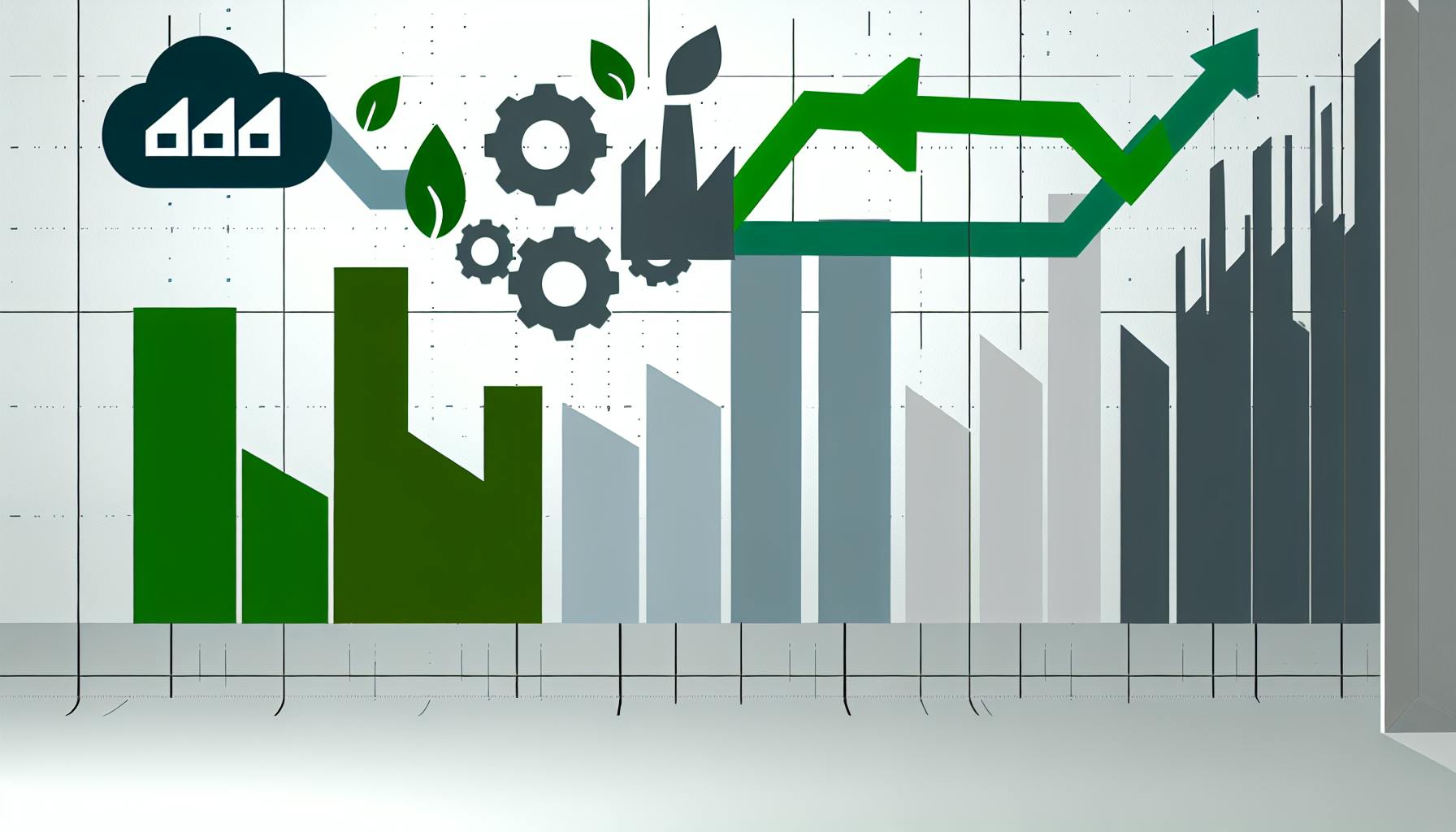Companies worldwide agree that sustainability has become an urgent priority.
By integrating SaaS solutions into their operations, companies can effectively track, report on, and reduce their environmental impact to become more sustainable.
This article explores how leading SaaS tools are empowering organizations on their sustainability journey - from helping them understand where they currently stand, to setting and meeting measurable climate goals through robust tracking and analytics capabilities.
The Journey to Sustainability through SaaS
Companies today face increasing pressure from stakeholders to demonstrate sustainable business practices that reduce their environmental impact. This section explores the rising sustainability expectations and the challenges companies face in tracking their footprint, alongside how purpose-built SaaS solutions can assist companies on their sustainability journey.
The Rising Demand for Corporate Sustainability
Consumers, investors, and governments are demanding greater climate action and transparency from companies on their environmental impact. Studies show that 75% of consumers factor sustainability into purchase decisions. Investors are also directing more capital towards sustainable funds that evaluate corporate ESG (Environmental, Social, Governance) performance. Many governments worldwide have introduced regulations requiring mandatory climate risk reporting from companies. This rising stakeholder pressure creates a business imperative for companies to improve sustainability performance.
The Challenges of Tracking and Reporting Impact
However, companies often lack the internal expertise to accurately measure key environmental KPIs like greenhouse gas emissions, water usage, and waste across complex global operations. Manual data collection processes are labor-intensive and prone to inconsistencies. Consolidating sustainability data into reports that comply with global disclosure frameworks like CDP, GRI, and SASB is extremely difficult without the right tools. These sustainability tracking and reporting challenges lead to companies substantially underestimating their true environmental footprint.
SaaS Solutions: A Catalyst for Sustainable Development Companies
Purpose-built SaaS solutions help address these sustainability measurement and reporting pain points through automated data collection, centralized databases, and actionable analytics. By seamlessly integrating emissions data across the value chain, SaaS tools provide companies the accurate, consolidated, and digestible insights to benchmark performance, identify reduction opportunities, and craft compelling stories to engage stakeholders. As regulatory and shareholder scrutiny intensifies, SaaS solutions equip companies with the fundamental capabilities to demonstrate leadership and progress on sustainability.
What brands are doing for sustainability?
Companies today face increasing pressure from stakeholders to operate sustainably and reduce their environmental impact. Many leading brands are taking concrete steps towards sustainability in their business practices.
For example:
- Beyond Meat produces plant-based meat alternatives that have a much lower carbon footprint compared to traditional meat products. Their products help consumers reduce their environmental impact.
- Who Gives A Crap makes toilet paper from 100% recycled materials and donates 50% of their profits to build toilets for those in need, promoting sanitation and sustainability.
- Patagonia uses renewable and recycled materials to make outdoor apparel and gear. They also offer product repair and actively campaign for environmental causes.
- Green Toys manufactures toys from recycled plastic and other environmentally friendly materials to avoid waste and resources used in making new plastics.
- Wipro EcoEnergy provides IT and consulting services focused on helping companies measure, understand, and reduce their environmental footprint through technology.
The above examples showcase how brands of different sizes and across industries are rethinking processes, materials, and even their core offerings to operate more sustainably. Their efforts showcase small and large steps companies can take to reduce environmental harm. For companies just starting their sustainability journey, simple changes like switching to renewable energy, reducing waste, or offsetting carbon emissions can add up to meaningful impact over time.
What 5 companies are known for their green marketing?
Green marketing refers to marketing efforts by companies that promote environmental sustainability. Some well-known examples of companies utilising green marketing effectively include:
Johnson & Johnson
Johnson & Johnson sets standards for environmentally-friendly practices through innovative sustainable products, recycling programs, and strong pledges to reduce its environmental impact. Some of its green initiatives include eliminating harmful chemicals from its products, using sustainable packaging, and committing to powering its facilities with renewable energy.
Patagonia
As a leader in eco-friendly apparel, Patagonia incorporates sustainability into its brand ethos. It promotes repairing and recycling clothes, uses renewable and recycled materials, and donates 1% of sales towards environmental preservation through its "Earth Tax" program.
Starbucks
Starbucks has comprehensive ethical sourcing programs for its coffee and sustainable store designs. Its "Greener Stores" framework incorporates renewable energy sources, energy-efficient equipment, and innovative water conservation methods. It has also committed to sustainable packaging goals for 2022.
IKEA
IKEA integrates sustainability throughout its operations with renewable energy sources, sustainable raw materials, eco-friendly packaging, and recycling programs. It aims to use only renewable and recycled materials in its products by 2030.
Nike
Nike utilizes recycled and sustainable materials in its products and prioritizes carbon neutrality and renewable energy in its facilities. Its focus areas also include ethical labour practices and community engagement around sustainability.
What companies are 100% sustainable?
Companies striving for 100% sustainability aim to have net-zero environmental impact from their operations. However, achieving absolute sustainability is an ongoing journey due to complex supply chains.
The "G100" ranks the world's most sustainable companies annually. The 2023 and 2022 top rankings feature pioneers in renewable energy, recycling, and clean technology.
2023 G100 Rank
- Radius Recycling - a Steel manufacturing and metals recycling leader investing in decarbonization.
- Vestas Wind Systems A/S - Global wind turbine producer powering green energy projects.
- Brambles Ltd - Supply chain logistics company operating a share-and-reuse model to reduce waste.
- Brookfield Renewable Partners LP - Operates renewable power assets like hydroelectric, wind, and solar plants.
Though no company is completely sustainable yet, these leading enterprises set examples through renewable operations, closed-loop systems, and clean energy generation. Their earth-friendly business models offer blueprints for sustainability.
sbb-itb-919600f
Which companies discuss sustainability?
Companies across many industries are increasingly focusing on sustainability efforts and discussing their environmental impact openly. Some of the top businesses leading sustainability initiatives include:
Accenture
Accenture provides professional services focused on digital transformation, strategy, technology, and operations. They aim to achieve net-zero emissions by 2025 and have implemented several sustainability programs.
Apple
Apple powers their facilities with 100% renewable energy and has robust recycling programs to reduce e-waste. They are transparent about tracking supply chain emissions and reducing environmental impact.
Estée Lauder
Estée Lauder set a net zero emissions goal for 2030. They partner with renewable energy providers and emphasize sustainable packaging to minimize waste.
Google aims to operate completely on carbon-free energy by 2030. Their data centers use 50% less energy than typical data centers. Expanding renewable energy is central to their sustainability strategy.
Ikea
Ikea has invested over $3 billion in renewable energy infrastructure to achieve their goal to use only renewable and recycled materials by 2030. Their products emphasize sustainable sourcing and circular design.
Intel
Intel aims to achieve net positive water use by 2030 and 100% renewable energy across global operations. They focus on efficient chip design to enable customers' sustainability efforts through computing.
Patagonia
As a leader in sustainable outdoor apparel, Patagonia uses renewable and recycled materials in their products. They have robust programs supporting environmental activism.
Unilever
Unilever, working to halve their environmental impact by 2030, reports over 75% of energy use coming from renewable sources. They disclose clear emissions tracking and sustainable sourcing efforts.
Many leading companies highlight sustainability initiatives around renewable energy, waste reduction, sustainable products, and transparency in reporting emissions and environmental impact. Their commitments and programs to discuss companies working towards sustainability signal an evolving corporate focus on this issue.
Sustainable Companies Meaning: Defining Green Corporate Practices
Companies today face increasing pressure from stakeholders to operate sustainably and reduce their environmental impact. But what exactly constitutes a "sustainable company"? Here we explore the meaning behind this term and how software tools can assist organizations on their sustainability journey.
Criteria for Most Sustainable Companies
The most sustainable companies tend to excel in several key areas:
- Measuring and reporting emissions: They use carbon accounting tools to quantify their greenhouse gas emissions across all scopes and share this data publicly. This transparency allows them to benchmark progress.
- Setting science-based targets: They establish emissions reduction goals in line with climate science to limit global warming. Targets are often approved through credible third parties like the Science-Based Targets Initiative (SBTi).
- Sourcing renewable energy: They actively transition their operations to run on renewable energy sources like solar and wind instead of fossil fuels.
- Engaging stakeholders: They educate and collaborate with customers, investors, policymakers and employees on sustainability issues to drive collective action.
- Innovating sustainably: They develop products, services and business models focused on environmental stewardship and social responsibility.
Understanding the Importance of Green Management
To ingrain sustainability across organizations, executives recognize the need to integrate green policies and practices into overall corporate management strategies:
- Sustainability permeates operations, from procurement and facilities to HR and finance.
- Cross-functional sustainability teams help coordinate efforts and maintain accountability.
- Investing in the right tools and solutions creates efficiency to balance sustainability and profitability.
- Tying progress on emissions reductions to executive incentives promotes leadership commitment.
- Annual sustainability reports benchmark development on ESG issues for stakeholders.
How SaaS Empowers Environmentally Friendly Companies
Software-as-a-service (SaaS) solutions enable organizations to successfully execute environmentally friendly business practices, including:
- Automating carbon accounting for accurate, real-time emissions data.
- Streamlining sustainability reporting through custom questionnaires and report generation.
- Analysing environmental impact of products and operations via lifecycle assessments.
- Launching employee and customer green initiatives through digital engagement platforms.
- Developing emissions reduction plans with scenario modelling capabilities.
With the right tools, companies can transform sustainability ambitions into measureable realities. SaaS plays an integral role making corporate environmental action easier.
Case Studies: Companies Going Green with SaaS
Companies across industries are realizing the importance of sustainability and environmental responsibility. Implementing green practices, however, can seem daunting without the right tools. This is where SaaS solutions for carbon accounting and stakeholder engagement come in. They provide the technology and guidance businesses need on their sustainability journey.
Here are some inspiring examples of companies that successfully went green with the help of SaaS platforms:
From Traditional to Green: Transformation Stories
The Grizzly Tool Company, a manufacturer of industrial drill bits, relied heavily on fossil fuels and non-recyclable materials. Implementing an automated SaaS carbon accounting solution gave them real-time insights into their largest emission sources. By switching to renewable energy and sustainable sourcing, Grizzly Tool reduced emissions by 42% annually. Their detailed sustainability reports also helped secure major contracts with green-conscious buyers.
Another example is Crest Hotels, a small hospitality chain struggling with high waste generation and inefficient operations. After deploying a sustainability-focused SaaS platform, Crest linked smart sensors across their properties to detect energy leaks. The data visibility drove initiatives like low-flow faucets and LED lighting that realized 23% energy savings. Their easy-to-update emissions dashboard also lets Crest showcase their green improvements during investor meetings.
Green Management Company Examples
The consumer goods giant Patagonia attributes much of its industry-leading sustainability success to the SaaS tools it relies on. By tracking emissions across its supply chain, Patagonia quantifies the environmental impact of sourcing decisions and transportation. It also uses stakeholder dashboards to consistently engage customers and employees on sustainability initiatives through metrics-driven storytelling. This builds brand trust while promoting green behaviours.
Another innovator is Volvo, which offers free carbon accounting SaaS to its suppliers. By allowing vendors to self-serve sustainability insights, Volvo can objectively assess supplier emissions performance for more informed, eco-friendly procurement. Hundreds of suppliers have decreased their footprints by double digits thanks to this program’s guidance.
Impact Achieved: Measurable Outcomes in Sustainability
The clothing retailer H&M integrates sustainability into every business process with help from its SaaS platforms. This enables H&M to account for and offset 100% of its emissions through renewable energy and reforestation. H&M also provides suppliers with self-service carbon calculators that realize supply chain emission cuts averaging 20% annually. Across stakeholders, H&M leverages data visualizations to consistently communicate sustainability wins like their 50% reduction in production emissions since 2015. The numbers speak volumes.
For the legal services firm Baker Eastman, deploying a streamlined SaaS carbon accounting solution reduced time spent gathering and processing emissions data by 80%. This efficiency gain lets Baker Eastman allocate more resources towards analyzing insights and identifying emission reduction opportunities. As a result, they achieve sustainability goals 45% faster than industry benchmarks. Baker Eastman also leverages automated reporting tools to showcase environmentally conscious practices during pitches, which drives revenue through improved win rates. The proof is in the numbers.
In closing, as enterprises across industries can attest, SaaS-enabled carbon accounting, reporting, and stakeholder engagement are pivotal for successful green transformations. The solution insights and environmental leadership support rapid, measurable improvements in sustainability. For any company pursuing eco-friendly operations, integrating these cloud-based tools can steer their organization towards becoming certifiably green.
Choosing the Right SaaS for Your Sustainability Goals
Making sustainable choices for your business often starts with choosing partners and tools aligned with your values. Selecting the right SaaS (Software-as-a-Service) solution for carbon accounting and stakeholder reporting is an important step on the path towards net-zero emissions.
When evaluating options, look for providers focused on transparency, renewable energy usage, and sustainable operations themselves. Their priorities influence product design and evolution.
Identifying Sustainable Companies to Work For and With
Seeking out sustainable businesses begins with awareness and research. Look for B Corp certification and participation in initiatives like the Climate Neutral Certified program. Review sustainability reports detailing environmental commitments, emission tracking methodologies, and progress over time.
Ask potential partners:
- How do you track and offset your operational emissions each year?
- What percentage of your energy use comes from renewable sources?
- Do you have internal teams dedicated to enhancing sustainability?
Favour solutions from transparent companies walking the walk themselves.
Comparing SaaS Tools for Optimal Green Outcomes
The best SaaS products for sustainability help you efficiently track emissions, identify reduction opportunities, engage stakeholders, and continually improve.
When comparing options, seek services offering:
- Automated data collection and carbon accounting
- Customizable reporting dashboards
- Stakeholder communication features
- Guidance exploring reduction strategies
Solutions integrating these capabilities empower ongoing emission quantification, verification, and progress communication.
Integrating SaaS with Existing Sustainable Practices
The most effective SaaS solutions enhance environmental initiatives already underway. Seek tools complementing current efforts by:
- Importing historical emissions data
- Connecting to real-time data sources
- Automating manual tracking/reporting
- Centralizing previously siloed analyses
- Enabling detailed drill-downs into problem areas
Carefully evaluate integration capabilities upfront to ensure streamlined incorporation into existing green workflows over time.
The right SaaS product can accelerate existing climate commitments through automation, insights, and stakeholder engagement features purpose-built for the task. Evaluating options based on both software capabilities and provider sustainability bona fides leads to solutions delivering optimal outcomes.
Conclusion: Accelerating Sustainability with SaaS Innovations
Embracing SaaS for a Greener Future
As companies work to reduce their environmental impact, software solutions are playing an integral role. SaaS platforms designed specifically to track, analyse, and report sustainability metrics are enabling organizations to efficiently monitor their carbon footprint and identify areas for improvement.
With automated data collection and real-time analytics dashboards, SaaS solutions eliminate manual processes and provide actionable insights companies can use to set and achieve environmental goals. By seamlessly integrating sustainability tracking into day-to-day operations, they empower teams across the business to contribute to emission reduction efforts.
The path to net zero requires companies to engage stakeholders, demonstrate progress, and continuously improve. Purpose-built SaaS products meet these needs with comprehensive carbon accounting, simplified reporting, and tools to communicate sustainability initiatives to customers, investors and employees.
By embracing innovative technologies, companies can accelerate their sustainability journey and inspire stakeholders to take climate action. As more organizations leverage SaaS to understand and reduce their footprint, they collectively drive towards a more sustainable future.



